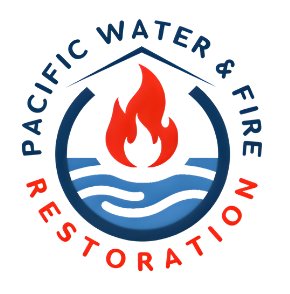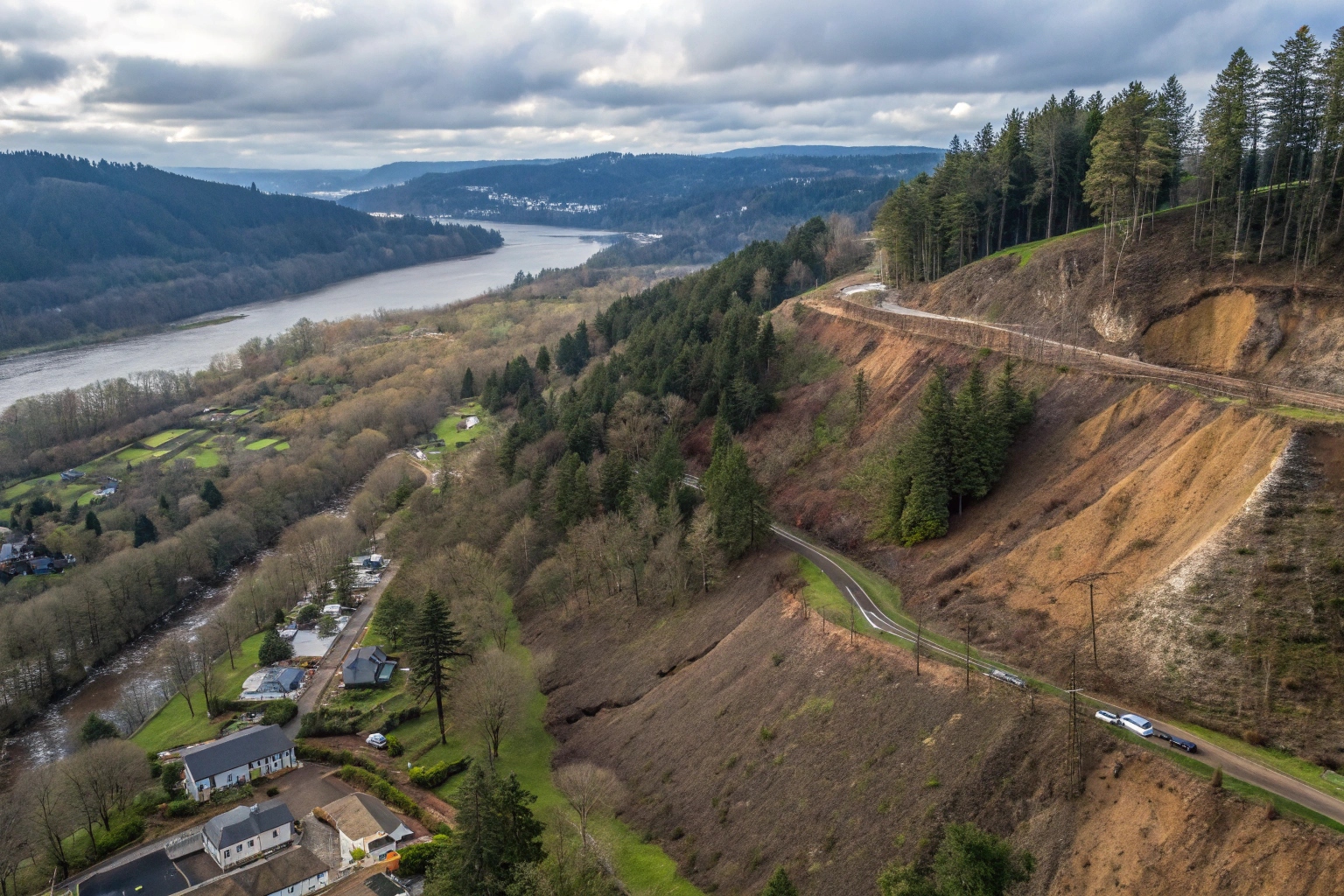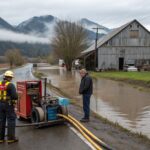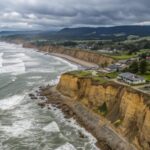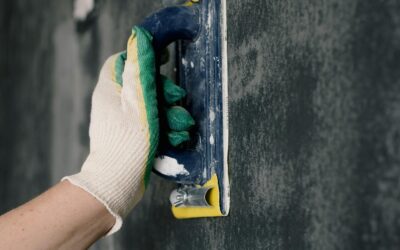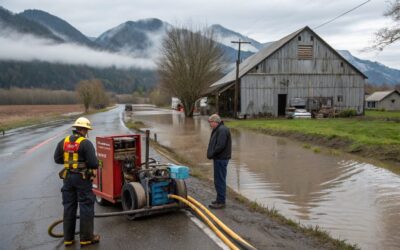In the Pacific Northwest, the breathtaking landscape that makes our region so beautiful also presents unique challenges for property owners. West Linn and the greater Portland area sit at the intersection of stunning topography and geological complexity, making landslide awareness a critical part of property management and community safety.
At Pacific Water & Fire Restoration, we’ve helped countless property owners recover from landslide damage throughout the Portland metro area. This experience has taught us that understanding the risks, implementing preventative measures, and knowing how to respond can make all the difference when the ground begins to shift.
Understanding Landslide Risk in West Linn and the Portland Area
The Pacific Northwest’s unique geology creates perfect conditions for landslides, especially during our rainy winters. West Linn’s varied terrain, with its steep slopes and proximity to water bodies, makes it particularly susceptible.
Local Risk Factors in West Linn
- Rainfall Patterns: The Portland area receives approximately 36 inches of rain annually, with the heaviest rainfall between November and February. These sustained periods of precipitation saturate the soil, adding weight and reducing stability.
- Geological Composition: West Linn sits on a combination of Columbia River Basalt, marine sedimentary rocks, and volcanic deposits. When layered, these materials can create unstable planes along which landslides occur.
- Slope Steepness: Many residential areas in West Linn feature steep slopes exceeding 25% gradient, significantly increasing landslide susceptibility.
- Urban Development: Construction on hillsides, vegetation removal, and improperly managed drainage can destabilize naturally secure slopes.
According to the Oregon Department of Geology and Mineral Industries (DOGAMI), approximately 30% of the West Linn area has moderate to high landslide susceptibility. Their SLIDO (Statewide Landslide Information Database for Oregon) mapping system has identified over 80 historical landslides within West Linn city limits.
Warning Signs: Recognizing Potential Landslide Activity
Early identification of landslide warning signs can save lives and property. If you notice any of the following indicators on your West Linn property, it’s time to take action:
- New cracks in the ground, foundations, driveways, or sidewalks
- Tilting trees, especially if previously straight
- Doors or windows that begin to stick or no longer close properly
- Sudden changes in groundwater patterns or new springs emerging
- Soil moving away from foundations or fence posts
- Unusual sounds like cracking trees or rumbling
- Bulging ground at the base of a slope
- Newly appearing patches of bare soil on hillsides
Pro Tip: Walk your property after heavy rainstorms to check for new cracks, shifts in soil, or changes in drainage patterns. What might seem like minor erosion could be the beginning of more significant earth movement.
Preventative Measures for Property Owners
Prevention remains the most effective approach to landslide management. Here are practical steps West Linn property owners can implement:
Drainage Management
Proper drainage is your first line of defense against landslides. Water adds weight to slopes and reduces soil cohesion, creating perfect conditions for earth movement.
- Install and maintain proper gutters and downspouts that direct water at least 10 feet away from your foundation
- Use rain barrels or cisterns to collect roof runoff
- Consider installing a French drain system around your property perimeter
- Keep drainage ditches and culverts clear of debris, especially during fall and winter
- Direct drainage away from steep slopes and vulnerable areas
Vegetation Strategies
Strategic planting plays a crucial role in stabilizing slopes:
- Maintain deep-rooted native plants on slopes (Oregon grape, salal, sword ferns, and native grasses work well in West Linn’s climate)
- Avoid removing established trees on slopes without professional consultation
- Replace shallow-rooted plants with deeper-rooted alternatives
- Create terraced planting areas on steeper slopes to reduce erosion
- Consider installing erosion control blankets when establishing new plantings
Safety Warning: Never remove large trees from slopes without consulting a geotechnical engineer. While trees can sometimes increase risk during windstorms, their root systems often provide critical slope stability.
Retaining Walls and Structural Solutions
For properties with existing instability or steeper slopes, structural interventions may be necessary:
- Professional-grade retaining walls designed specifically for your soil type and slope angle
- Soil nailing or ground anchors for existing vulnerable slopes
- Gabion baskets (rock-filled wire containers) for erosion control
- Proper foundation drainage behind retaining structures
- Regular professional inspection of existing retaining walls
Remember that structural solutions for landslide prevention require proper engineering and often city permits. In West Linn, any retaining wall over 4 feet typically requires a building permit and engineering review.
Working with West Linn City Resources
West Linn has developed several programs and resources to help property owners manage landslide risks:
City Planning and Zoning
West Linn’s Comprehensive Plan identifies areas with increased landslide susceptibility and imposes special development requirements in these zones:
- Geologic Hazard Overlay Districts require additional site assessment before construction
- Restrictions on vegetation removal in sensitive areas
- Special building code requirements for foundations on slopes
- Drainage plan requirements for new construction
Available Resources
- The West Linn Public Works Department provides free property drainage assessments
- DOGAMI offers detailed hazard maps through their website
- West Linn’s Building Department can provide guidance on permits for retaining walls and drainage systems
- The Soil and Water Conservation District offers technical assistance for erosion control
Case Study: The Hidden Springs Neighborhood Response
After a series of small landslides following the exceptionally wet winter of 2016-2017, Hidden Springs neighborhood residents worked together to implement community-wide mitigation measures:
- Assessment: The neighborhood association partnered with a geotechnical firm to assess all hillside properties, identifying critical risk areas.
- Coordinated Drainage: Rather than individual solutions, residents implemented a neighborhood-wide drainage management system that directed water safely away from vulnerable slopes.
- Vegetation Management: The association organized community work parties to remove invasive plants with shallow root systems and replace them with native deep-rooted species.
- Monitoring Program: Residents established a volunteer monitoring system, checking designated areas after significant rainfall events and reporting concerns.
The result? Despite similar rainfall patterns in subsequent years, the neighborhood has experienced no significant landslides since implementing these measures.
When Prevention Isn’t Enough: Emergency Response
Despite best efforts, landslides can still occur, especially during extreme weather events. When they do, quick and appropriate response is essential:
Immediate Steps During/After a Landslide
- Ensure Safety First:
- Evacuate if necessary and safe to do so
- Call 911 if anyone is injured or in danger
- Stay away from the slide area – secondary slides often follow the initial movement
- Check for damaged utilities (gas, electric, water) and report them immediately
- Document Everything:
- Take photos of all damage for insurance purposes
- Note the time and circumstances of the slide
- Record all emergency measures taken
- Contact Professionals:
- Call your insurance company immediately
- Contact a restoration service experienced in landslide response
- Request a geotechnical assessment before attempting any cleanup
The Restoration Process
At Pacific Water & Fire Restoration, our landslide response typically follows these stages:
- Assessment and Safety Evaluation: Our team works with structural engineers to determine if the property remains safe to occupy and what immediate stabilization measures are needed.
- Water Management: We implement emergency drainage solutions to prevent further saturation and damage.
- Debris Removal: Using specialized equipment, we safely remove soil, rocks, and debris from buildings and critical areas.
- Structural Drying and Cleaning: Any structures affected by mud or water are properly dried and cleaned to prevent secondary damage like mold.
- Coordination with Specialists: We work alongside geotechnical engineers and landscape professionals to implement longer-term stabilization measures.
- Restoration Planning: Our team helps develop a comprehensive plan to restore your property to safe, functional condition.
Pro Tip: Keep an emergency contact list ready that includes your insurance agent, utility companies, and restoration specialists. During landslide emergencies, having this information readily available can save crucial time.
Insurance Considerations for West Linn Homeowners
Understanding your insurance coverage before a landslide occurs can save considerable stress during an emergency:
- Standard homeowners policies typically do not cover landslide damage
- Separate “earth movement” coverage or a Difference in Conditions (DIC) policy is usually required
- Coverage costs vary based on your property’s specific risk factors
- Some insurance companies offer discounts for properties with professionally designed mitigation measures
We recommend reviewing your coverage with your insurance agent, particularly if your property has slopes exceeding 20% gradient or has shown any warning signs mentioned earlier.
Conclusion: A Community Approach to Landslide Management
West Linn’s approach to landslide management demonstrates that combining individual property measures with community efforts creates the most effective protection. By understanding local risk factors, implementing preventative strategies, and knowing how to respond appropriately, property owners can significantly reduce their vulnerability to landslides.
The Pacific Northwest’s geological challenges are balanced by the beauty they create – the same forces that build our stunning landscapes also require our respect and preparedness. At Pacific Water & Fire Restoration, we’re committed to helping Portland area residents not only recover from landslide damage but implement measures to prevent future occurrences.
Take Action Today
Don’t wait for the ground to shift before addressing potential landslide risks on your property:
- Emergency Response: For immediate landslide damage, call our 24/7 emergency line at 503-201-7337
- Preventative Assessment: Schedule a free property evaluation to identify potential vulnerabilities
- Professional Consultation: Our specialists can help develop a customized landslide prevention plan for your specific property conditions
Remember, in the Pacific Northwest, landslide prevention isn’t just about protecting your property – it’s about preserving our unique landscape for generations to come.
Pacific Water & Fire Restoration serves the entire Portland metro area, including West Linn, Lake Oswego, Oregon City, and surrounding communities. Our IICRC-certified professionals are available 24/7 for emergency response to water, fire, mold, and landslide damage. Contact us at 503-201-7337 or visit our website to learn more about our comprehensive restoration services.
